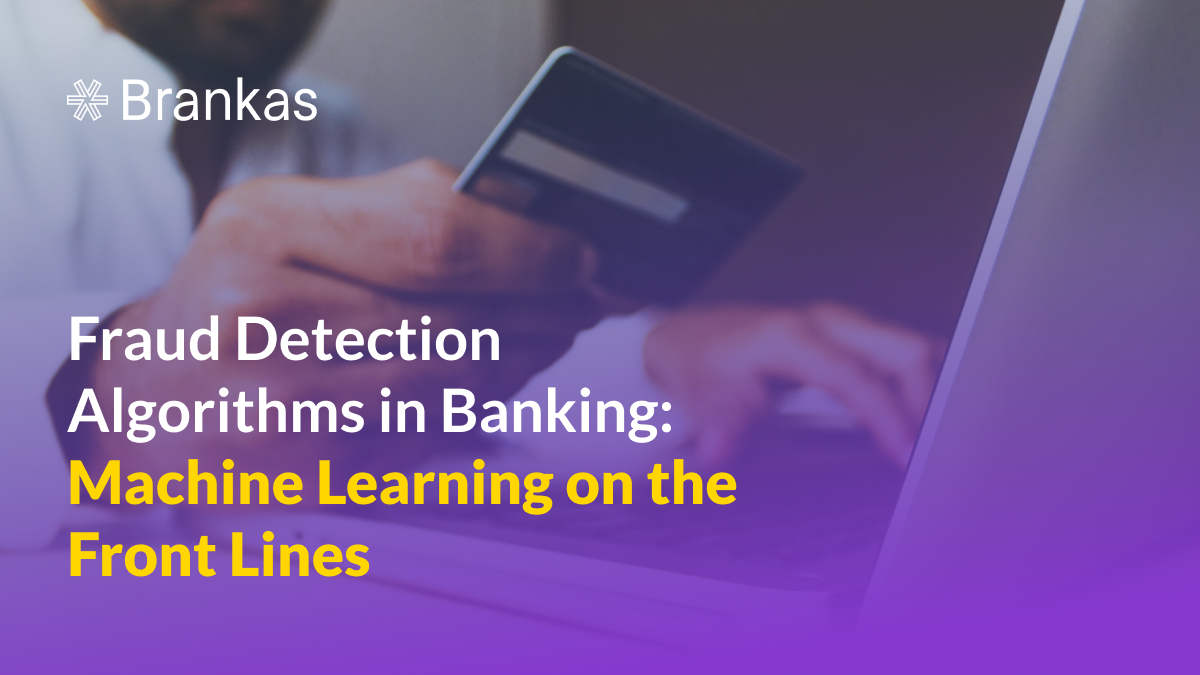Fraud Detection Algorithms in Banking: Machine Learning on the Front Lines
“Most people are starting to realize that there are only two different types of companies in the world: those that have been breached and know it and those that have been breached and don’t know it.”
- Ted Schlein, partner at Kleiner Perkins Caufield & Byers
Digitalization is ushering convenience and accessibility for everyone but heralded immense financial and reputational damages worldwide from fraud. SEON CEO Tamas Kadar said 71% of financial enterprises have reported a security incident in 2022. Fraud detection and prevention have become an essential part of business operations.
Technology is advancing quickly, and so are illegal activities. Traditional methods of detecting fraud are no longer enough. The static nature of rule-based systems, high false positive rates, reliance on historical data, resource-intensive manual reviews, and lack of real-time detection capabilities contribute to their diminished effectiveness. Banks are increasingly turning to advanced technologies such as machine learning to enhance their fraud identification capabilities and stay ahead of evolving deceptive tactics.
Understanding Fraud Detection Algorithms
Fraud detection algorithms are specialized tools designed to identify and mitigate fraudulent activities within financial transactions. These algorithms leverage various techniques and technologies to analyze patterns, detect anomalies, and predict fraudulent behavior. Here’s an overview of the main types:
1. Rule-based algorithms are the most traditional form of fraud detection that operate on predefined rules and thresholds set by experts. For example, a rule might flag transactions over a certain amount or from specific locations. These rules are typically derived from historical fraud patterns and expert knowledge.
2. Anomaly detection algorithms identify transactions that deviate significantly from the norm. These algorithms use statistical methods and machine learning techniques to establish a baseline of normal behavior and flag deviations as potential fraud. They are more flexible than rule-based systems but can still suffer from false positives if the normal behavior is not well-defined or the algorithm is not properly tuned.
3. Machine learning algorithms represent the most advanced approach to fraud detection. The models learn from historical data and continuously adapt to new patterns.
Machine Learning in Fraud Detection
The banking industry handles tremendous amounts of customer and transaction data, providing suitable conditions to apply machine learning. Machine learning models can learn from volumes of data, adapt to new fraud tactics, and continuously improve their performance.
Machine learning trains algorithms to recognize patterns and make predictions based on data. These algorithms analyze historical transaction data to identify characteristics of legitimate and fraudulent transactions. As more data is processed, the models improve at distinguishing between the two.
Traditional fraud detection systems typically rely on specific rules set by experts to identify suspicious activities. These systems cannot easily adapt to new fraud patterns without manual updates. Rigid rules can lead to numerous false alarms where legitimate transactions are flagged as fraudulent. Traditional methods often detect fraud after it has occurred instead of preventing it in real time.
Machine learning offers many advantages. Its models continuously learn from new data, making them more effective at detecting evolving fraud tactics. They can adapt to changes in transaction patterns and identify new types of fraud. Machine learning can identify and prevent fraudulent transactions in real time, reducing the risk of financial losses.
Machine Learning Techniques in Fraud Detection
Key types of machine learning algorithms used in fraud detection include:
A. Supervised learning- these algorithms are trained on labeled data, where historical transactions are tagged as fraudulent or non-fraudulent. Examples include decision trees, logistic regression, and neural networks. They excel at detecting known fraud patterns and can be precise if trained on high-quality data.
B. Unsupervised learning- these algorithms do not require labeled data. Instead, they identify patterns and groupings within the data to detect anomalies. They are effective at identifying new or unknown fraud patterns.
C. Semi-supervised learning- combines elements of supervised and unsupervised learning, utilizing a small amount of labeled data to guide the learning process. This approach is useful when labeled data is scarce but can provide valuable guidance to improve detection accuracy.
Use Cases of Machine Learning in Fraud Detection
Machine learning’s applications in fraud detection are diverse and provide financial institutions with powerful tools to combat fraud effectively.
1. Credit card fraud detection
ML (machine learning) algorithms monitor credit card transactions in real time and identify suspicious activities such as unusual spending patterns or transactions in multiple locations within a short period. ML models analyze user behavior, creating profiles based on spending habits. Any deviation from these established patterns triggers alerts for potential fraud.
2. Identity theft prevention
ML systems detect anomalies during the authentication process, such as multiple failed login attempts or log-in from an unusual device or location. By analyzing changes in user behavior and accessing patterns, ML can identify and prevent account takeover attempts.
3. Money laundering detection
ML models analyze large sets of transaction data to detect patterns consistent with money laundering activities such as structuring deposits just below reporting thresholds. ML techniques map and analyze the relationships between different entities involved in transactions to identify suspicious networks indicative of money laundering.
4. Loan application fraud detection
ML systems verify the consistency and authenticity of information provided in loan applications, cross-referencing data from various sources. It enhances traditional credit scoring methods by incorporating a wider range of data points to improve the accuracy of risk assessments and detecting potential fraudulent applications.
5. Payment fraud detection
ML algorithms monitor online transactions for signs of fraud like mismatched billing and shipping addresses or unusual purchase patterns. In peer-to-peer payment platforms, ML models detect suspicious activities such as sudden changes in transfer amounts or frequency.
JPMorgan Chase and Westpac employ anomaly detection algorithms to identify transactions or activities that deviate from a customer’s typical behavior. Capital One leverages machine learning to detect patterns and monitor for potential fraud, such as fake signatures, modified amounts, and fake checks. Citibank utilizes machine learning algorithms to uncover links between seemingly unrelated accounts that indicate fraudulent activity like common IP addresses, devices, or physical addresses.
Machine learning has become an indispensable tool in the fight against financial fraud. Its ability to continuously learn, adapt, and improve detection capabilities offers a significant advantage over traditional methods. Financial institutions can more effectively protect themselves and their customers from the constantly developing threat of fraud by leveraging machine learning. As machine learning advances, its role in ensuring the security and integrity of financial transactions will only grow more crucial.


